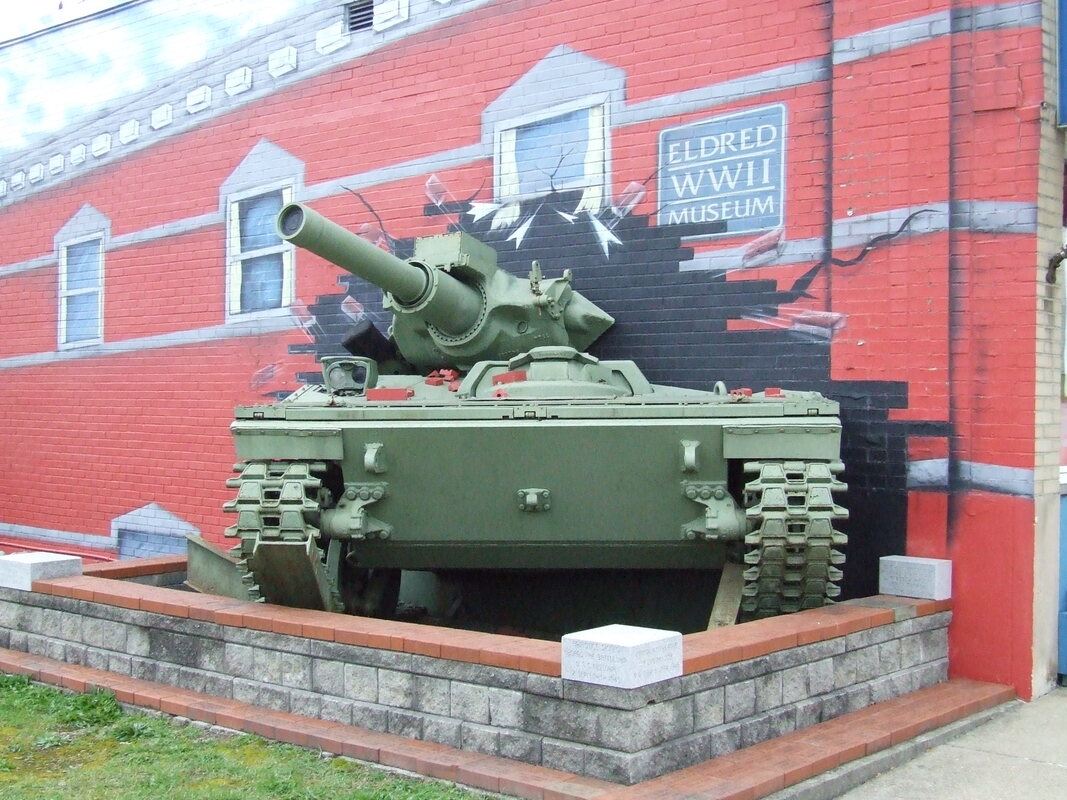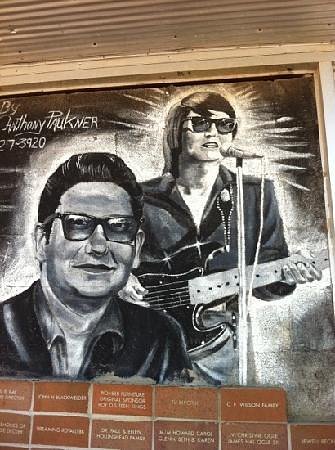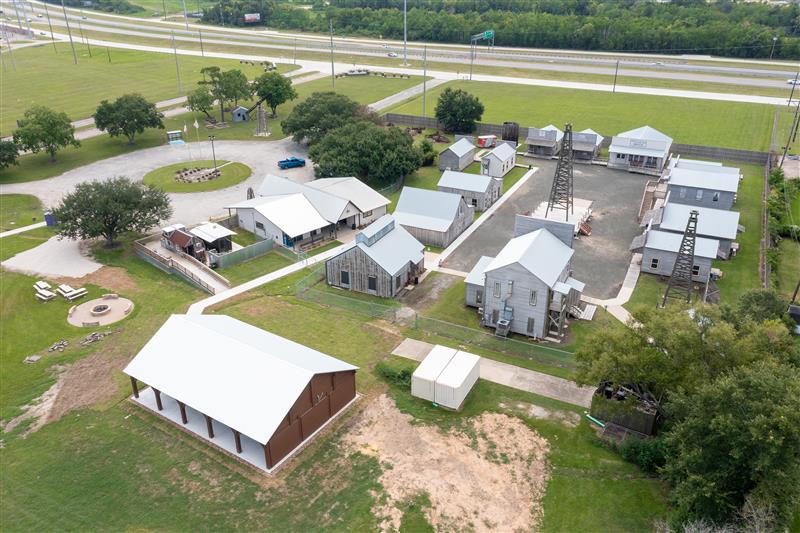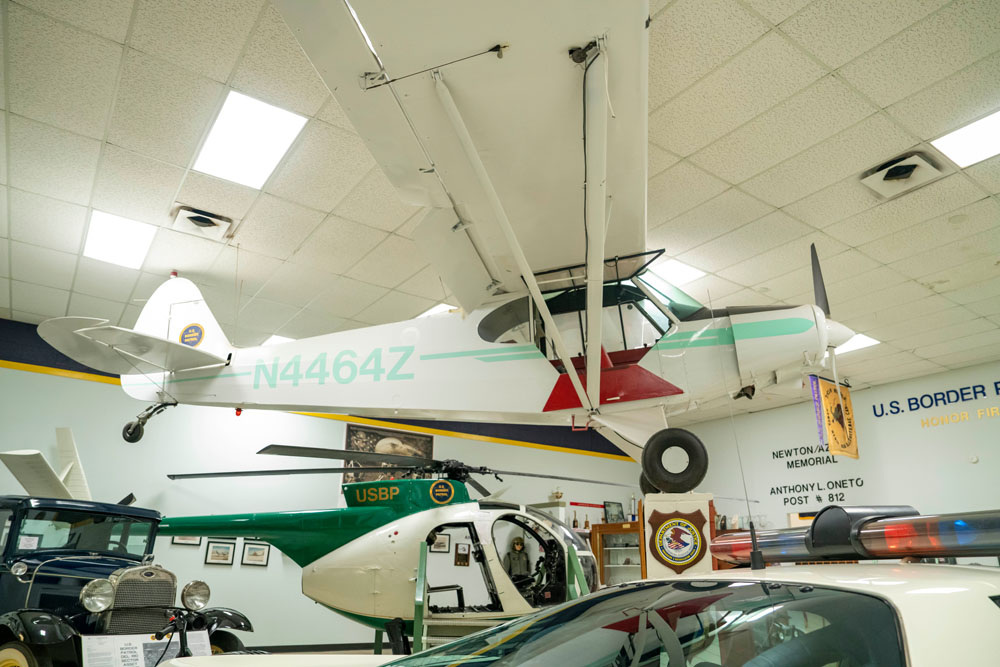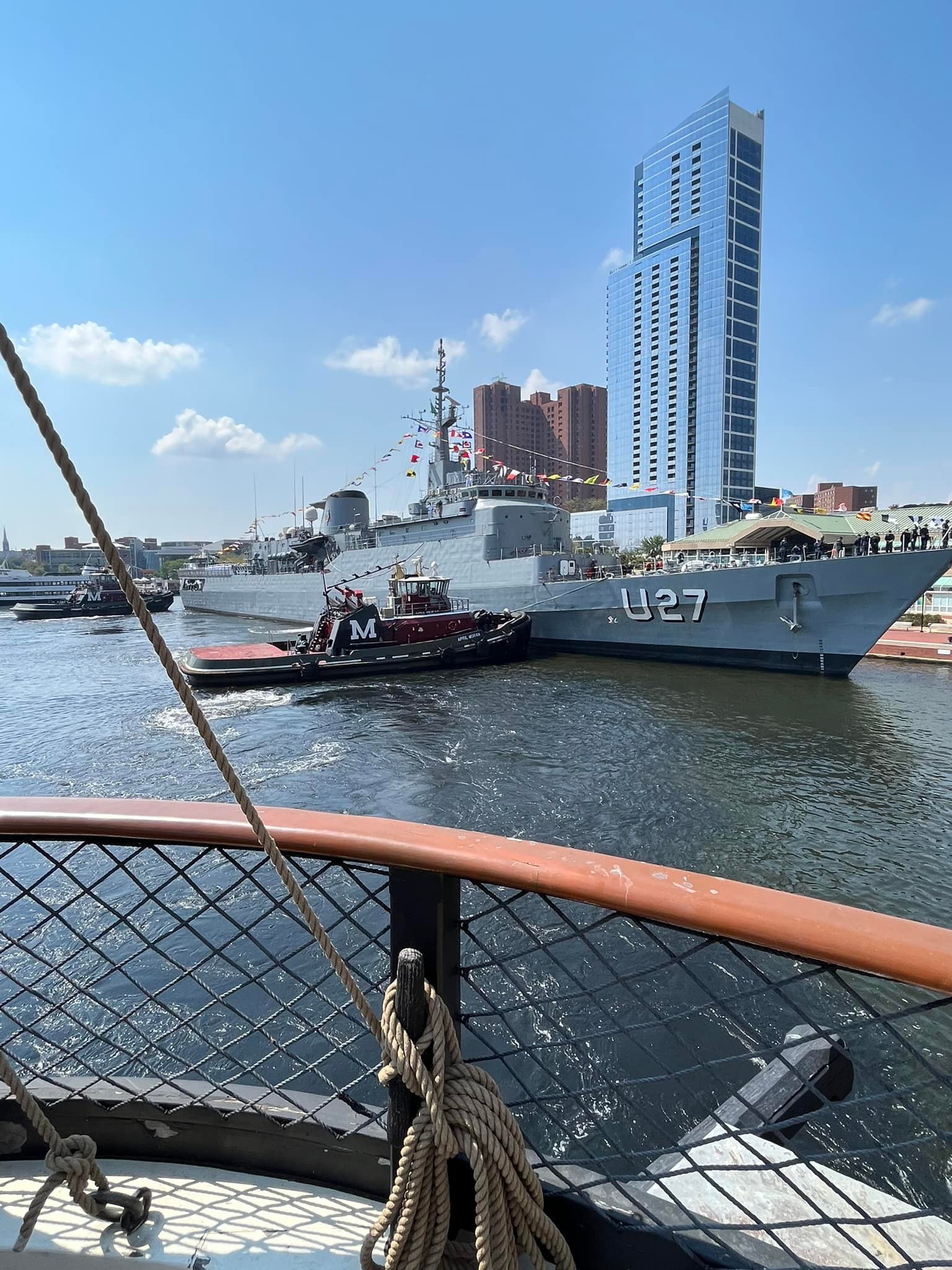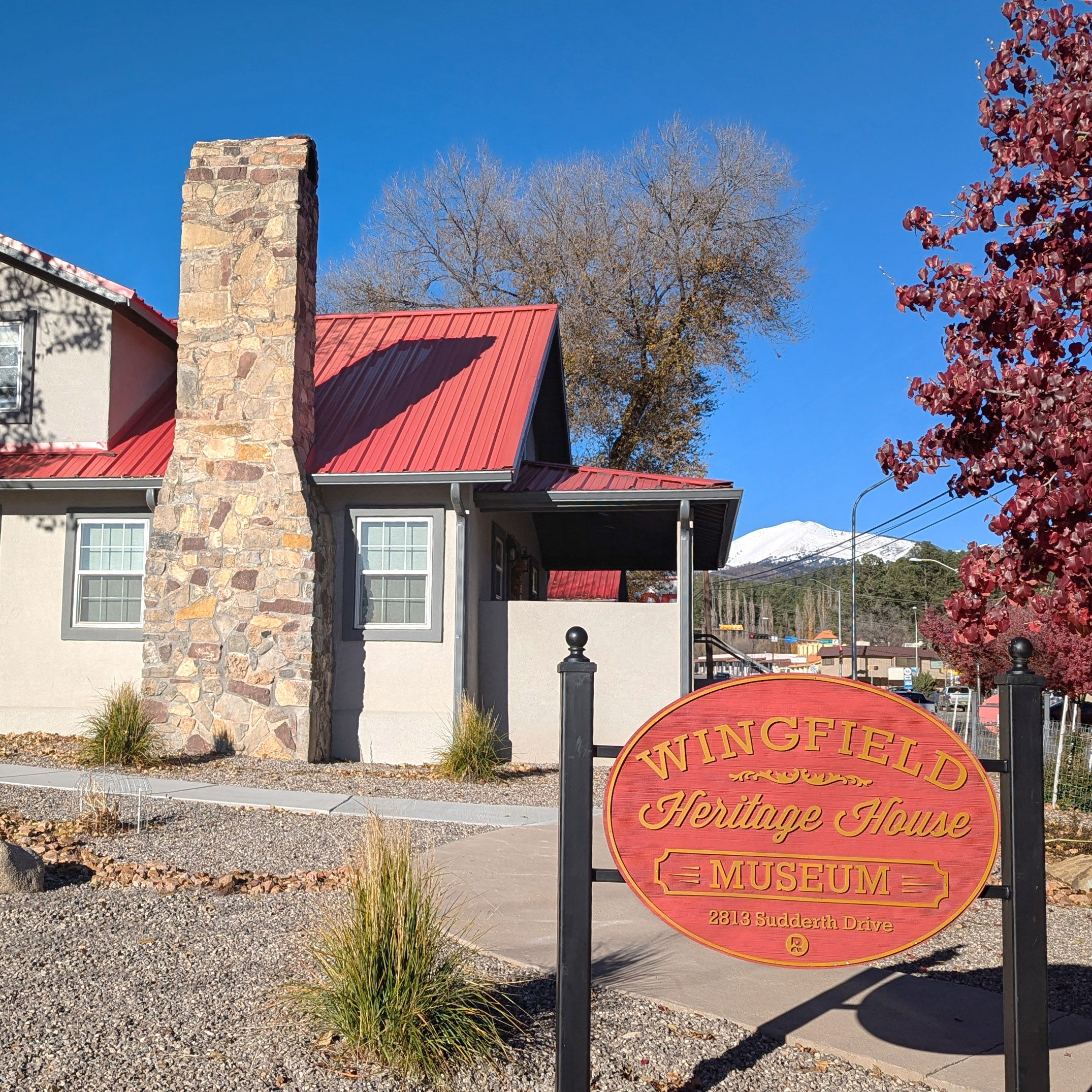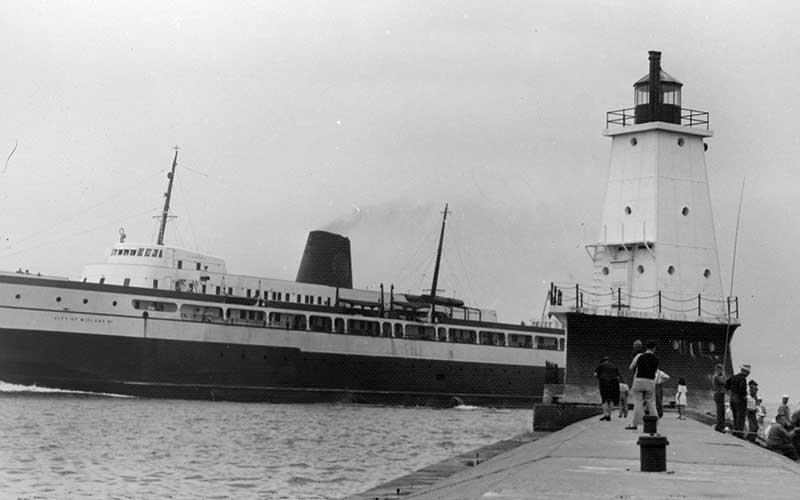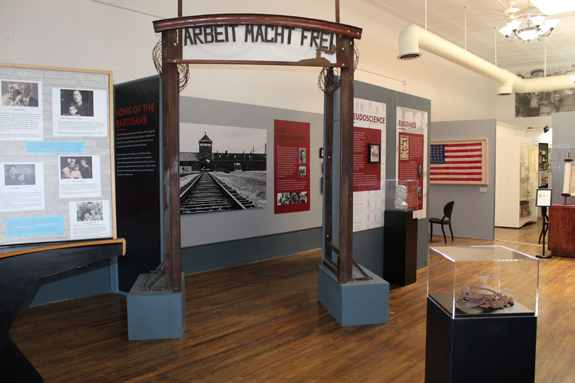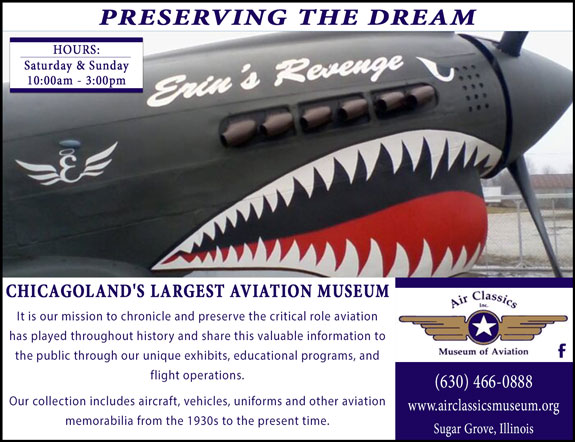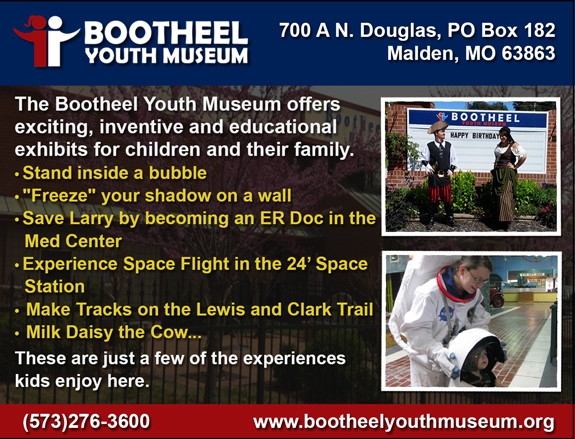Museum Guide News
Museum Guide News
“Why is there a World War II Museum in Eldred. PA?”This is a common question received by staff at the Eldred WWII Museum. The answer lies in a munitions plant that was operated in the Eldred area during the war. The plant did not start out as an American operation, however.
George Roudebush, an American lawyer, with J.W. Whitmore, a Canadian, found the Eldred area to be a suitable location for a munitions plant that would serve British armed forces. To preserve and interpret the history of World War II. To commemorate the contribution of 40 million Americans that supported the 16 million fighting soldiers during the epic struggle to defend freedom and democracy against the forces of greed and aggression. To help shape a stronger future for the United States by helping present and future generations understand the lessons of the 20th century, the Museum was created!
In the 1990s, George Roudebush's son, Tim, was working as a businessman in Kansas. He was very much distressed by the youth's lack of knowledge regarding World War II and its influence on the world. Knowing the legacy of the National Munitions Plant and its workers in Eldred, Tim elected to construct a museum in their honor; not in a large city like Buffalo or Pittsburgh, but in Eldred itself. The museum opened in 1996 and has since seen consistent expansions that has grown the museum to over 15,000 square feet.
Today, the museum also houses the Robert A. Anderson Library. It serves as a significant resource for research on the subject of World War II. The library was established in 1999 upon the acquisition of the collection of historian Robert A. Anderson. The collection was a life-long passion and included thousands of books and rare artifacts.
The museum has continued to add to the collection which now exceeds 8,500 volumes. The holdings of the library include rare or out of print books that the researcher may not be able to find in a local library. In addition to books, researchers also have access to veteran statements and interviews, various wartime periodicals, videos, and documents within the museum’s archives.
So, when you are passing through northern, PA stop off in Eldred and visit a little bit of unfound WWII history. Museum is open December – February Tuesday - Friday: By appointment Saturday: 10:00 am - 4:00 pm March – November Tuesday - Saturday: 10:00 am - 4:00 pm Sunday: 1:00 pm - 4:00 pm. Admission Adults: No Admission fee, donations appreciated Children 18 and under: Free. 814-225-2220 - https://www.eldredpawwiimuseum.com/#/
The Roy Orbison Museum is a small museum dedicated to rock-n-roll legend and singer-songwriter Roy Orbison, who lived in Wink, TX as a child and performed with various country-western bands during the 1950s before heading on to pop stardom.
The Museum was formed in 1989 by volunteers of Wink to pay tribute to a favorite former resident of this small oil field town, Roy Orbison after his death in December 1988. The museum houses memorabilia from all over the world courtesy of his many fans.
While Wink, TX is very small, it attracts visitors from many countries around the world to visit the museum. The museum will celebrate Roy Oberison’s 90th birthday. And on April 23, 2026 Wink will celebrate their Centennial on May 9th, 2026. Both promises to be wonderful celebrations!
When ready to visit us, contact Barbara at 432-999-8838. The museum is free, but donations are always welcome!
Spindletop Boomtown Museum takes visitors back in time to experience what life was like on the hill for the workers, the deal makers, and families who called this area home during the early 20th century boom days.
On January 10, 1901 on Spindletop Hill outside of Beaumont, Texas, the Lucas Gusher roared to life. This spectacle ushered in the petroleum age, changing the course of United States history.
In the beginning of the 20th century, the Southeast Texas economy, like that of most of the South, relied on subsistence agriculture, but cattle ranching and the lumber business were also important. Large ranches sent cattle to New Orleans, and mills in Beaumont and Orange produced lumber for shipment to the rest of America and overseas. Southeast Texas had another resource – oil – but the amount underground remained a mystery.
To the north, settlers near Nacogdoches used seeping oil for lubricants before 1800. In 1847, the settlers at Sour Lake noticed that oil was bubbling to the surface, and after the Civil War Dick Dowling tried unsuccessfully to drill a well near there. There were numerous discoveries in east and central Texas in the later years, especially at Corsicana in 1896. Wildcatters drilled at Spindletop in 1893 and 1896 and at Sour Lake in 1896. However, there was no significant oil production along the Gulf Coast until the gusher at Spindletop in 1901. Total Texas oil production was 836,000 barrels in 1900, a small fraction of national production (63 million barrels).
This was the start of the rich history and the oil boom and industry in South East Texas. The Spindletop Boomtown Museum explores all facets and more! Come visit us in Beaumont, TX and explore this amazing exploration and industry! 409-880-1750. Hours: Tuesday - Saturday: 10:00 a.m. - 5:00 p.m.Sunday: 1:00 pm - 5:00 p.m. (closed Mondays and major holidays)
https://www.lamar.edu/spindletop-boomtown-museum/spindletop-history/index.html
The National Border Patrol Museum in El Paso, TX is one of a kind in the country and is a must visit!
It all started on October 25, 1978, thirty-four Border Patrol Inspectors met in Denver, Colorado. The purpose of the meeting of that visionary group was to establish an organization which they named the “Fraternal Order of Retired Border Patrol Officers” (FORBPO). In addition to the establishment of FORBPO, these officers envisioned a National Border Patrol Museum.
The institution that they envisioned would be charged with the collection, preservation, and display of Border Patrol artifacts and history. Thus, the creation of a National Border Patrol Museum, and the collection of artifacts began. A year later, on August 4, 1980, the Secretary of State for the State of Texas issued a Certificate of Incorporation Number 527890-1. This certificate identified the Museum as a tax-exempt entity under Section 501 C (3) of the Internal Revenue Code.
On October 1, 1985, the National Border Patrol Museum opened its doors in the basement of the old Cortez building in downtown El Paso, Texas. The museum operated out of this humble facility until 1992 when it was closed due to a dispute with the landlord. Following the closure, the Museum property was stored until the new Museum was built in 1994.
Today, The Border Patrol Museum offers several exhibits pertaining to Border Patrol Operations. The Sign Cutting exhibit features a diorama explaining how sign cutting operations and tracking work to detect illegal entries into the United States. Additionally, the exhibit displays methods used by individuals to disguise their tracks in an effort to elude detection, and offers definitions to explain terminology used in tracking operations. Tracking has been an essential tool and skill learned and used by Agents since the inception of the Border Patrol.
Also, complementing the museum’s rich Border Patrol collection, is the Memorial Library, which offers a range of materials on Border Patrol history from its inception in 1924 to the present. The library/archives provide support to researchers at all levels interested in furthering their understanding of the nation’s first line of defense: the Border Patrol.
As the museum has evolved over the last 40 plus years it has become the proud repository for memorabilia and memories of more than 80 years of Border Patrol history. We encourage you to visit us when in El Paso or Texas and view this very important museum and the history of our country’s first line of defense! https://borderpatrolmuseum.com/ Located: 4315 Woodrow Bean Transmountain Dr, El Paso, TX. Open: Tuesday – Saturday, 9 AM – 5 PM (915) 759-6060
Historic Ships in Baltimore, is a vital and growing institution located in the heart of Baltimore's Inner Harbor.
The organization/museum is steward of the Sloop-of-War USS Constellation, U.S. Coast Guard Cutter WHEC-37, Submarine USS Torsk, Lightship 116 Chesapeake, and the Seven Foot Knoll Lighthouse. This stewardship includes managing the collections related to these mega-artifacts, and preserving and interpreting the history of these sites. The Museum plays a key role in the heritage and cultural landscape within the City of Baltimore and strives to raise awareness throughout Maryland and the United States of these important elements of our nation's history.
Located in Baltimore’s Inner Harbor, our exhibits celebrate over 200 years of Maryland's naval and maritime history. We offer a variety of events throughout the year to enrich your experience and support our exhibits. Historic Ships offers a variety of unique programs that you can choose from to experience life aboard our vessels. Check out how you can rent out one our venues - https://historicships.org/events/venue-rental
When you reserve a group program, you will get to explore one of our vessels with a museum educator as your guide. Guided tour programs last about 1 hour and cover your choice of topics and include presentations & hands-on activities that focus on the lives and duties of those who served at sea. These tours are perfect for many type of groups and ages – great for Veterans wanting look back in history!
Check our list of upcoming activities and events below, or select your desired month from the dropdown here. https://historicships.org/activities.
Walk to Decks, Learn the Ropes, Live the Life! Experience 19th century life at sea with one of the most impressive collections of military vessels in the world. We look forward to welcoming you and your families to expererience the history of Baltimore and the US Navy! 410-539-1797. https://historicships.org/
The people of Philadelphia and the Greater Delaware Valley region have played very important roles in the development of the Navy over the past two and a half centuries, building some of the Navy’s most iconic and historic vessels.
Early shipbuilding in Philadelphia, including the United States and the Constitution, was done along the waterfront at shipyards owned by Pennsylvania Quaker Joshua Humphreys. A formal navy yard in Philadelphia was created at Southwark in 1800 before moving to a bigger plot of land at its current location on League Island in the 1870s. For the next ninety years, the yard served as one of the Navy’s primary shipbuilding and repair facilities.
Over the course of two centuries, important Naval vessels were designed, built, and launched in Philadelphia and the surrounding areas, from the Swedish-American engineer John Ericsson’s USS Princeton in 1843, to the USS Michigan in 1904, to the USS Francis Robinson during World War II.
Though the Philadelphia Naval Yard ended most of its activities at the shipyard in the 1990s, the legacy left by the vessels produced there and at other local shipyards looms large in US naval history, especially at this 250th anniversary of the United States Navy.
In partnership with the American Swedish Historical Museum, the National Museum of the United States Navy (NMUSN) is proud to present, And Let Victory Tell the Rest: 250 Years of Shipbuilding in Greater Philadelphia, opening June 26th at ASHM. The exhibit will include artifacts from USS New Ironsides, USS Michigan, a model of the John Ericsson- designed USS Passaic, among others.
Visit -https://www.americanswedish.org/exhibitions/and-let-victory-tell-rest-250-years-shipbuilding-greater-philadelphia to learn more about the exhibit and its related events.
And Let Victory Tell the Rest is part of Homecoming250, citywide celebration of this historic anniversary in Philadelphia. https://www.homecoming250.org/
US Navy Shipbuilding in Philadelphia, was written by Gordon Calhoun, Historian & Curator, National Museum of the United States Navy and Edited by the American Swedish Historical Museum.
Nestled in the mountain town of Ruidoso, New Mexico, the Wingfield Heritage House Museum invites visitors to immerse themselves in the rich tapestry of local history. Originally built in the 1920s by Ike and Lula Wingfield, the house served as a family residence for three generations before eventually becoming part of the heart of the community.
Today, beautifully restored to reflect its original character, the museum stands as both a tribute to the Wingfield legacy and a living record of Ruidoso’s development. Inside, each room is thoughtfully curated to tell stories about early settlement life, native cultures, and the growth of the region’s industries, arts, and tourism.
One of the museum’s signature projects is Ruidoso Rewind, a weekly radio show aired on KRUI The Mountain. The program, written and narrated by the museum’s curator Stephanie Long with production by Greg Widener, explores the hidden histories and significant events that shaped the Ruidoso area. In 2025, the show earned a prestigious Award of Excellence from the American Association for State and Local History (AASLH), recognizing its role in bringing local heritage to life.
The Wingfield Heritage House Museum is open Wednesday through Saturday, 10:00 am to 5:00 pm, and admission is FREE. The museum also hosts community-oriented events, such as Hands-on History Family Day, which features interactive activities like retro games, historic handwriting practice, and artifact mystery challenges.
To help support its mission, the museum works closely with the Friends of the Wingfield Heritage House Museum, a nonprofit dedicated to fundraising, collecting artifacts, and engaging new volunteers. For those planning a visit or looking to contribute historical items from life, business, or tourism in the Ruidoso area, the Wingfield Heritage House Museum stands as a cherished gateway into the past—anchoring community memory and inspiring future discovery. https://www.ruidoso-nm.gov/wingfield-heritage-house-museum
The Wisconsin Maritime Museum, in Manitowoc, WI cares for a collection of nearly 20,000 objects and a substantial archive pertaining to the maritime history of Wisconsin, Manitowoc shipbuilding, and USS Cobia.
This includes more than 60 boats, approximately 300 regionally-built outboard motors, and over 250 ship models. Shipbuilding tools, marine navigational equipment, naval uniforms, and maritime archaeological artifacts also make up significant and growing portions of the collections. When objects are accepted into the museum’s collection, we agree to take care of them in perpetuity. This is an ongoing commitment, and a responsibility we take very seriously.
The museum also cares for more than 10,000 Great Lakes shipwreck artifacts, curated on behalf of the State of Wisconsin, in its role as the preferred repository for recovered Wisconsin shipwreck artifacts. (Note, federal legislation in 1987 codified that it is expressly illegal to remove items from historic shipwrecks).
The WMM collection is one of the largest maritime collections on the Great Lakes and reflects the museum’s mission of connecting all people with Wisconsin’s waterways, by engaging and educating the public about the Great Lakes, Wisconsin’s maritime history, Wisconsin’s WWII submarines, and USS Cobia. As the museum has grown over the past half-century, caring for our expanding collections has, likewise, become more challenging.
While our Franklin Street facility allows us to house over 12,000 objects, items are now vulnerable to damage and deterioration. Through the years this facility has become overcrowded, making a more efficient storage system necessary. So preliminary work, largely grant funded by two programs with the Institute of Museum and Library Services (IMLS), plans for expansion has begun!
We invite you to visit our museum an experience the history of Maritime in Manitowoc, WI and more! https://www.wisconsinmaritime.org/visit/
The New Mexico Holocaust & Intolerance Museum and Gellert Center for Education uses lessons and personal stories of the Holocaust and other genocides to educate and inspire communities of upstanders. This unique museum experience reinforces the idea that every single one of us can make a positive difference.
Located in the heart of downtown Albuquerque, the New Mexico Holocaust & Intolerance Museum provides a unique educational experience for visitors from around the world. The only museum of its type in the state, it opened in January of 2001. The institution was founded by Werner Gellert, a Holocaust survivor, his wife, Frankie, and Juliana K. Lerner, also a Holocaust survivor. Their intent was to show--along with the Holocaust--genocides and other instances of organized hate in the hopes that such atrocities might never happen again. We embody that mission through our exhibits which describe hate groups in America, propaganda, the Armenian genocide, the Chinese exclusion Act, colonization as it affected Native Americans, and the African-American experience. Our collections include a diverse array of unique artifacts, including the Flossenbürg Flag, a replica of the United States flag made by prisoners of the Flossenbürg concentration camp to welcome their liberators.
In keeping with our focus on education and outreach, we revived school visits which had been suspended due to COVID. Recently, nearly 200 middle and high school students were welcomed at the museum. After a guided tour of the exhibits, they had the incredible opportunity to hear the story of a local Holocaust survivor who was a hidden child. By studying the Holocaust, these youngsters learned about historical consequences of prejudice, hate, and intolerance, and how to combat these forces in their own lives. They learned what it means to be an upstander rather than a bystander.
The New Mexico Holocaust & Intolerance Museum is a one-of-a-kind highlight to any Albuquerque vacation. Visit us to learn what you can do to prevent hate and intolerance and make our world a better, more equal place for all! https://nmholocaustmuseum.org/
The AACA Museum, Inc. is America’s Transportation Experience! We’re dedicated to the preservation and presentation of the motor vehicle history in a way that provides for the education and entertainment for our guests.
The museum delivers a world-class automotive experience through innovative and interactive exhibits that appeal to all ages and illustrate the historical evolution and potential future impacts of one of the most culturally defining innovations of modern times – the automobile.
The idea of presenting an automobile collector’s museum in Hershey, PA, originated with a committed group of automobile hobbyists. As their determination to move the project forward grew, their enthusiasm gained support throughout the region. In 1993, the AACA Museum, Inc. was incorporated as a Pennsylvania nonprofit educational institution! The new vision focused on presenting America’s intriguing automotive heritage to the public. The museum launched a $12 million capital campaign dedicated to building a world-class museum.
The vision of a world-class automotive heritage museum in Hershey became a reality. The 71,000-square-foot museum, officially named the AACA Museum, Inc., opened on June 26, 2003. Offering noteworthy exhibits and an ever-growing permanent collection, the museum welcomes guests of all ages to enjoy the wonders of invention, interactive educational displays, famous and one-of-a-kind vehicles, and family fun.
Today the AACA Museum at Hershey displays vintage automobiles in unique settings. Visitors can stroll through eight decades in time while traveling from New York to San Francisco. It’s a trip down “memory lane” as iconic settings reveal vehicles from generations of American motoring. The museum sponsors workshops and activities designed to raise public awareness and appreciation of the role that the automobile has played in shaping 20th century America. *Plaese check out our new exhibits which are always changing: https://www.aacamuseum.org/exhibits-experiences/#current_exhibit
AACA Museum embraces the role of the collector in preserving automotive heritage. It is unique in that all the cars on display have been donated or offered for display by car experts and enthusiasts!
The AACA Museum at Hershey ranks among the top automotive museums in the world and has been recognized by the Smithsonian as an Affiliate Museum. The museum is home to the Cammack Tucker Collection, the world’s most extensive collection of Tucker automobiles and memorabilia. AACA Museum also houses the Museum of Bus Transportation Collection.
When traveling through Pennsylvania, make a point to stop and visit the AACA Museum and take a trip back in automobile and transportation history! https://www.aacamuseum.org/
